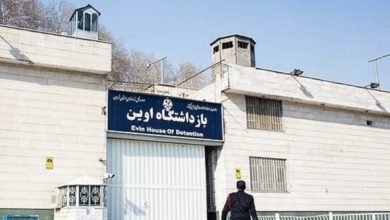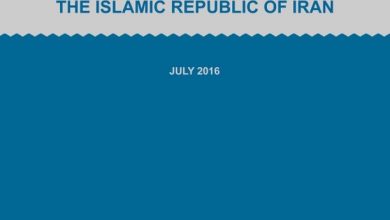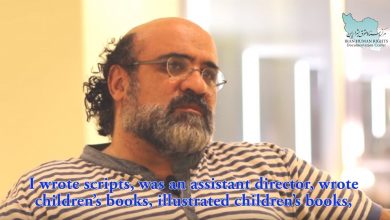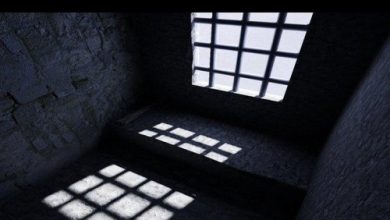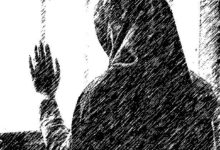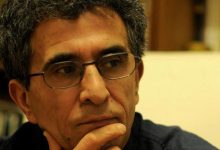Witness Statement: Shahrara
Shahrara was convicted for her political activities in 1983 when she was sixteen years old. She was not released from imprisonment after completing her sentence in the early spring of 1988 because she refused to repent. In this witness statement, Shahrara describes her experiences in prison, and the massacre of political prisoners during the summer and fall of 1988.
Full Name: Shahrara (Pseudonym)
Date of Birth:
Place of Birth:
Occupation:
Interviewing Organization: Iran Human Rights Documentation Center (IHRDC)
Date of Interview:
Interviewer: IHRDC Staff
Witnesses:
This statement was prepared pursuant to an in-person interview with Ms. Shahrara. The statement consists of 38 paragraphs and 9 pages. The interview was conducted in Europe on May 23, 2009. The statement was approved by Ms. Shahrara on December 14, 2009.
Witness Statement
I. Arrest
1. My name is Shahrara. I had not yet reached my sixteenth birthday when I was arrested in the spring of 1983. I had an appointment in Laleh Park when two Iranian Revolutionary Guard Corps (IRGC) vehicles surrounded the area and arrested me. The individuals who arrested me wore IRGC’s military uniforms. They put on a blindfold and took me to Komiteh-yeh Moshtarak1 (or Committee). The Committee was used as a detention facility both during the Shah’s time and after the Revolution. When we were on our way to the Committee, they told me that they only wished to ask me a few questions. Actually, I was interrogated for more than eight hours and then I was transferred to Evin..
2. At the time, the Islamic Government was beginning to target their political opponents and it was not unusual to get arrested. During those years I was a leftist and was close to the Fedaian-e Khalq Organization. I read their literature, accepted their platform as that of a legitimate revolutionary movement, and participated in their activities.
3. In the beginning, my interrogators did not really know who I was. They continued to ask questions, but I was able to withhold the address and location of my home for a good twenty-four hours. After midnight they took me along and surrounded my home. They blindfolded me and we entered my home via the neighbors’ home with weapons drawn. They turned everything upside down. They tore through my pillows and blankets in search of evidence. They destroyed everything they laid their hands on. After a while, they discovered an internal party document. This document allowed them to officially arrest and detain me for “security” reasons.
4. After they discovered the Fedaian party pamphlet at my house, they were convinced that I was a member of the Minority faction, I was not admitting it. A little while later, I was positively identified by a prisoner that had decided to cooperate with the regime. This man had chosen to become a tavvab2 while in prison. I had my blindfold on and never saw his face, but he identified me and alleged that I was responsible for selling and distributing party literature.
5. A month after my arrest, I was transferred to Ahvaz in Southern Iran for further interrogation. I was originally from southern Iran, but at the time of my arrest I was living in Tehran. They kept interrogating and mistreating me down there for close to a month. The cells were very small and dingy, and the hallways in which the cells were located resembled coffins. The cells and hallways were completely dark—prisoners could not tell whether it was night or day. The prison did not have any sort of accommodations. It was a horrible place. After about a month, they returned me to Evin.
1 Komiteh-yeh Moshtarak, or “Committee,” refers to an infamous detention facility used by the Shah’s security and intelligence forces to detain, interrogate and torture political prisoners. After the 1979 revolution, the Islamic Republic renamed it the “Towhid detention facility,” but continued to use the facility as a place to detain and interrogate many of its political opponents.
2 A tavvab is anyone who has engaged in the act of tawbih, or penitence. It usually refers to “reformed” political prisoners who agreed to cooperate with the regime while serving out their prison sentences.
II. Mistreatment
6. In Evin, they placed me alongside sixteen tavvab prisoners who were among the most prominent members of their parties, but had broken while in prison. They treated me terribly, had an eye on me all the time, and reported about me to the prison authorities.
7. I was often forced to sit in the hallways for hours before I was called in for questioning. While waiting, I was subjected to the groans and whimpers of those being tortured. They kept me in the hallway several times from morning until the evening without ever calling me in for questioning. This anticipation, agitation, and constant state of fear really haunted me. In other occasions, they would wake me up in the middle of the night. I thought I was on my way to being executed. A few times they set up fake execution scenes and took me to the gallows. I remember one evening, one of the guards came into our room and ordered me to put on my chadors3 and blindfold. He summoned me out and took me to another area of the prison. When I got there, I heard the sound of gunfire. Then a few of the guards stamped their feet and shouted “Allah-u Akbar!” These instances created an indescribable feeling of fear inside of me. I felt that I was about to be executed by firing squad.
8. For example, after I was transferred to Evin, I was kept in the hallways of Section 209 for close to three weeks. While I was there, I witnessed many prisoners with their hands shackled to the hallway railing. Another group of prisoners slept in the hallways. (After three weeks) they summoned me in for interrogation. I refused to answer several of their questions, so they blindfolded me and sent me to the basement. I could sneak a peek or two from underneath my blindfold. We reached a room. They spread me on the table and tied my hands and feet to the edges of the table. There were several of them and I felt as if they had surrounded me. They began beating the soles of my feet with a cable.
9. It felt as if they were using different types of cables to strike my feet—every strike felt different from the one before it. The pain was unbearable. The pain shot right up to my head. It felt as if they were dragging a dagger across the soles of my feet. I am not sure, but I think after the first series of lashings I lost consciousness. Usually, they would continue striking the prisoner’s feet as long as she reacted with pain. If not, they would stop the torture, leave the room, and return after about fifteen minutes. The questioning would continue at that point. They pressured me into revealing my appointments and the names of the party members I was in touch with. I continued to insist that they had made a mistake and that I should not have been arrested and interrogated.
10. After they beat the soles of my feet with cables, they were forced to take me to the infirmary because my feet were in terrible shape. After the infirmary, however, they continued on with their beatings. I lost consciousness several times during these beatings.
11. Almost a year passed. I had three visits with my family. During these visits, we spoke of ordinary matters. At no point did we even entertain the notion of hiring an attorney, because it simply did not matter. Lajevardi, one of the high-ranking prison authorities, used to say that any lawyer who defended kafers4 and monafeq5 was no different than someone who takes up arms. Lajevardi believed that any such individual was acting against the Islamic Republic and that the regime should not allow someone who is working against the regime to defend another who is in the same position.
3 The chador is a veil that covers the whole body.
4 Kafer means “unbeliever”; someone who is not Muslim.
5Monafeqin was the derogatory name used by the regime against Mojahedin members. Monafeq means ‘hypocrite’ in Persian.
III. Trial
12. A year after my arrest, they took me to court. The trial took place inside Evin prison itself. I was blindfolded while in court. The prison guards took me out of my cell and blindfolded me and it took about five to six minutes for us to reach the courtroom. There were about three or four people present inside the courtroom. I could not see them as I was blindfolded. The trial lasted a few minutes. At the court, they merely informed me that I had been sentenced to six and a half years for supporting and being a member of the unlawful Fedaian-e Khalq (Minority) and for distributing literature and pamphlets for the party. They also informed me that my period of imprisonment began from that point on (i.e., the day of my trial) and not from the moment of my arrest. No other words were exchanged between us. I was never given an opportunity to speak or defend myself.
13. After my trial, they transferred me to a ward that had extremely small cells. The living conditions were quite difficult there. Space was very tight and we were forced to take turns in order to sleep. They stuffed fifty prisoners in one of these small rooms. Outside these rooms there was a hallway. On each side of this hallway, there were several cells without windows. They usually brought prisoners who were about to be executed to this hallway and the prisoners would spend their remaining hours inside these cells. Right next to the hallway, they had placed a bed. The guards had imposed harsh rules in the wards, which were very hard for prisoners to abide by. For example, they wanted fifty prisoners to use restrooms and take showers in half an hour in a few rooms. All prisoners were unable to use the restrooms in that short period of time. Sometime, there were old ladies, sick prisoners, and young children among us. As a consequence, the guards would beat the prisoners for not abiding by the rules.
IV. Continued Pressure
14. Pressure and interrogation continued through out my prison term. Political prisoners were alert that they might be called for interrogation at any time. I had the fear that prison authorities might have discovered new information and call me for questioning. Thus, I was living in a constant atmosphere of fear. I had nightmares because of this fear. Whenever they would blindfold me and take me for interrogation, I was afraid they might have discovered new information or have arrested new people who had betrayed me.
15. In addition, every once in a while, they summoned me and ordered me to write reports on events that occurred inside my ward. At the time, all of my ward mates got along with each other very well. They combined their money so that we could all purchase necessities inside prison. They shared whatever they bought with each other. If one of the inmate’s families gave them some clothes, they would make sure to share the clothes with the others. This was the custom among both Leftist and Mojahedin prisoners. In any case, when we refused to answer their questions, they would send us to solitary confinement. I usually refused to answer these questions and was often sent to solitary confinement.
16. Prison authorities were always looking for an excuse to summon us for interrogation. I remember one time my cellmate was sitting on the toilet in the ward and using it as a chair. We were passing the time by swapping stories and telling jokes. The next day, they summoned both of us and accused us of having “moral” issues. They returned us to the cell and whipped us in front of the others. They always looked for an excuse to beat us.
17. During my detention in Evin, the governor of the prison changed several times. When I was released, Naserian was the governor. Before him, it was Meisam. For a while, Koochaki was responsible. He was not there during my detention; another individual by the name of Fakoor was the governor. Mojtaba Halvai was among the most prominent individuals present during my detention in Evin. Halvai played a very important role in the eventual execution of prisoners.
18. My prison term ended in early 1988. Around that time, they called me for interrogation. neither repented nor denounced my party at the interrogation. I was not released and became a ‘Milikash.’6 I was detained along with other Milikash prisoners from then on.
19. The regime wanted to break us by making us to denounce our political beliefs, to pledge allegiance to regime, to give a video interview, and to criticize our ideology in front of other prisoners. When I refused their conditions, Nasirian told me that I would remain in prison, “as long as my hair turns gray like my teeth.”
V. Preparation for the Massacre
20. Months before the massacre of the prisoners, the regime began making preparations for the 1988 massacre. I remember at that time they summoned each of us, one by one, to interrogation via the loudspeakers in the prison. I think the name of the person responsible for these summons was Zamani (which was undoubtedly a pseudonym). He was a representative of the Ministry of Intelligence inside Evin prison. When we arrived in the interrogation room, they provided us with a series of forms. We were required to fill them out. The questions on the form asked questions regarding our personal and political views, such as our view of the regime, international events, Islam, our contacts with various political parties, and whether or not we prayed. The prisoners reacted to these interrogations sessions differently. The position one took was often based on the political party they belonged to (or their personal views). Some refused to answer them at all and called the sessions, ‘inquisitions.’ Others answered the questions.
21. After we filled out the forms, they returned us to our cells. Some of the prisoners had become suspicious and thought something horrible was about to happen. At the time, Leftist and Mojahedin prisoners were kept together. All of the unrepentant prisoners were kept in one ward but in different rooms. (At one point, they transferred us in Section 325, which also included only unrepentant prisoners. They took me from my solitary cell to Section 325. This happened in 1987. After that, they took us back to a room in Section 216. The inquisition was like a retrial.)
6 Also called ‘Azadiha” and refers to those group of prisoners whose prison terns has ended but did not denounce their party and ask for forgiveness.
22. During the winter of 1987, these interrogations had become very orderly and systematic. In addition to the forms filled out by the prisoners, authorities also conducted in-person interrogation sessions. They summoned prisoners and orally asked them the same questions that were included in the forms. I do not remember exactly when they first summoned me for my in-person interview (because I was taken in for questioning several times). They asked me about my views regarding the regime, my personal beliefs, and my political convictions.
23. We spoke about what was going on among ourselves, but we never imagined that they were making plans for a widespread execution of the prisoners. Even the first series of the prisoners who were executed did not know that they were about to be executed. When we heard the news inside the prison, we could not accept the fact that the regime was capable of committing such a brutal massacre of defenseless and innocent prisoners.
24. After the inquisition, I and other prisoners whose terms had ended but who were not willing to give interviews or sign repentance letters (“Azadi-ha”7) were transferred to other cells. Gradually, other prisoners joined us and our number increased. Prisoners from different political spectrums, like Mujaheedin, Tudeh, Rah-e Kargar, Fidayan minority and majority, were living together in the Azadi-ha cells. They were all steadfast prisoners. There were some prisoners among us who were not steadfast prisoners, but had not accepted one or two conditions of the release and remained in prison long after their prison terms had ended.
VI. Beginning of the Execution
25. I knew nothing about the ceasefire between Iran and Iraq in July 1988 because I was in solitary confinement at the time. One of the inmates who had access to a newspaper informed me that the regime had accepted the ceasefire. This inmate also told me (via Morse) that prison authorities had entered the wards and taken several women Mojahedin prisoners with them. She believed that these prisoners were executed in groups. She also informed me that just prior to being taken away, these prisoners had really stepped up their resistance against prison guards. This news was surprising to us because before that many Mojahedin had adopted a much more flexible and tactical stance in order to gather intelligence inside the prisons. This was one of many disagreements that had caused a major split between Leftist and Mojahedin prisoners inside the prison. In any case, this prisoner also informed me that authorities had taken away all the newspapers and television sets inside the wards and prohibited any access to the outside world. It was only after this news that I began to realize that Evin was now in lock down.
26. Around the same time, one of our friends (who had previously complained about our lack of regular access to bathrooms) was called in for questioning. Apparently, Hosseinzadeh had told her that prison authorities were taking steps to improve the situation. He specifically told our friend that the situation surrounding access to the bathrooms and food would soon improve. In reality, Hosseinzadeh was indirectly referring to the massacre of prisoners, but simultaneously insinuating that they may soon open the prison doors and solve our problems.
7 Azadi-ha is a term used by the prisoners to identify prisoners whose sentences had ended, but continued to endure imprisonment because they were uncompromising in their ideological or political views, or refused to accept the prison authorities’ preconditions for release. Azadi-ha were also referred to as Mellikesh.
VII. Summon before the Death Commission
27. After a while, they returned me to my room again. Then all of a sudden, Hossein Ali Nayyeri, Moghtadai, Mojtaba Halvai, and Lajevardi entered our room. This was truly unusual. These were some of the most prominent prison authorities—what were they doing here? They asked each of us to identify ourselves. They also asked us which party we belonged to. Anyone they did not like (or whom the prisoners identified as troublemakers) was summoned and ordered to stand in the hallway. They ordered me to leave the room and go stand in the hallway.
28. They took us to solitary confinement that very same day. The next day we went in front of the Death Commission. I believe we were the first group of women prisoners to go before the Death Commission. Whether it was still July or not, I cannot remember very well. Nayyeri and Moghtadai were present during my retrial. I do not remember the total number of people present in the room, but I think there were at least five individuals there (including Mojtaba Halvai, Lajevardi, Nayyeri and Moghtadai). One of the first questions they asked me was whether or not I was a Muslim. I answered that I was born a Muslim, but that I did not consider myself one. They asked my views regarding the Islamic Republic and I answered that I did not accept the regime as legitimate. They asked if I prayed and I said no. After these questions, they issued my judgment: I was to receive five lashes for every prayer session until I agreed to pray. My retrial did not take more than two or three minutes.
29. After my retrial, I was contacted by one of the Mojahedin prisoners via Morse. She had information regarding the executions and named several Mojahed Azadi-ha whom she claimed had already been killed. She also said that several Leftist male prisoners had also been executed. Apparently, the Islamic Republic had decided to whip the female Leftists until they accepted Islam and decided to pray instead of executing them.
30. Whipping began right after my retrial. Many of the prisoners, including me, could not resist the whippings and accepted to pray after only a few days. The groups of prisoners who followed us, however, put up more resistance because they knew what to expect. I think the second and third group of prisoners each lasted for about twenty to twenty-two days. I heard that one of the prisoners in the third group endured 550 lashes and still refused to surrender. Apparently, Nayyeri personally assumed the responsibility of whipping her in the last round. He told her that all she needed to do was to nod her head and agree to accept Islam—there was no need to submit to prayer. But the prisoner did not accept Nayyeri’s condition and continued her resistance.
31. Meanwhile, executions of prisoners were going on. I remember one day when I was in my solitary cell, I tried to sneak a peek outside and see what was going on. Inside my cell there was a heater and it was possible to take a peek outside if I managed to climb on top of it. So I did, and I saw a group of men who were lined up, blindfolded, and marching toward the prison’s sanitarium. The prisoners were singing a popular revolutionary anthem as they were marching. It was a strange scene—it was an amazing scene – both inspiring and tragic. I felt that they were living their lasts few moments on earth as they were marching towards the gallows because of their beliefs. I could also hear the stamping of the guards, who attempted to counter the prisoners’ anthem by shouting “Allah-u Akhbar!”
32. After they transferred me back to the cell, I felt an immense amount of pressure. I decided to slit my wrist. One time, when the guard was distracted, I broke a piece of glass and slashed my veins. Blood gushed out and I lost consciousness. They transferred me to the infirmary.
33. I was not the only one who attempted suicide because of the severe psychological and physical pressure we were under. One of the inmates in the room next to me also attempted suicide. Her name was Soheila Darvish. Unlike me, she was successful. I found out she had killed herself when I heard one of the guards scream. In the morning, she had come over to her cell to provide some tea. When she opened the door she screamed and the plate she was carrying fell to the floor and shattered. Later, I found out that Soheila had hanged herself. However, her death seemed very suspicious.
34. I think they killed most of the Mojahedin prisoners at Evin, regardless of whether they were male or female. They even executed one of the Mojahedin prisoners who had lost her mind in prison and was always sick and in bed. As far as I know, however, they did not execute female Leftists at Evin. The only Leftist prisoner who was executed was Fatemeh Modaressi-Tehrani, who was a Tudeh member. It has been said that she was executed in the spring of 1988.
35. After a while, the whipping of Leftist female prisoners came to an end. The situation slowly improved. They then detained us among ordinary prisoners. We were constantly harassed by these prisoners. They would frequently surround us and chant, “Death to communists!” There were four of us who were detained among the ordinary, nonpolitical prisoners. After that, they transferred us to solitary cells located in the sanatorium and we were kept there for about two to three months.
VIII. Release
36. In the autumn of 1990-two years after the end of my term, I was still in prison. All of the remaining political prisoners were being kept in the sanatorium. The prison authorities attempted to put pressure on us by using our families so that we would break and agree to write repentance letters. Several prisoners broke and accepted the regime’s conditions for release. But others continued to resist.
37. That same month, they summoned me and informed me that my family had placed their home and store as collateral for bail so that I would be freed. At the time, Naserian was the head of Evin prison. He summoned me and said that I was allowed to go on leave and be with my family for two weeks. As I mentioned before, families put a lot of pressure on their loved ones to accept the regime’s conditions for permanent release. My mother was ill and my family had used their land and store as collateral—everyone expected me to give in to the conditions. I was put in a very difficult spot. In the end, I decided to provide them with a promise that I would discontinue my political activities but I refused to give an interview. In my letter I wrote that I reject my past activities and promise not to become politically active again. I acknowledged that if I were to continue these activities, I would be tried and sentenced again.
38. This was how I was released. After that, I had to report every week to Revolutionarily Prosecution office and to answer to their questions. Like before, I was blindfolded and made to sit on a chair facing the wall and answer their questions in the Revolutionary Prosecution office. I was under surveillance. My social and family lives were always controlled. I was living in a constant atmosphere of fear. Every time that I reported to the Revolutionary court, there was the possibility of being re-arrested and sent to prison. In fact, we were denied our citizenship rights. We could neither continue our education nor have the right to work. I was indeed trapped in a larger prison after release.

